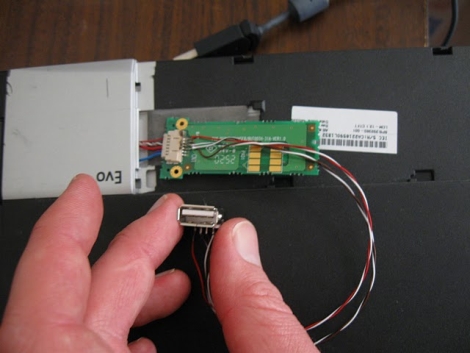
[Jarrod] has an older Compaq laptop he is still pretty keen on, but he has one niggling problem – the laptop doesn’t have a built-in wireless card. He recently changed security protocols on his home wireless network to WPA and realized that his old Linksys PC card only supports WEP. He decided it was time to find another way to connect wirelessly, so he started searching around for options.
It turns out that his laptop does have the ability to accept a LCD-mounted add-on wireless card, but it costs about $100 and doesn’t support WPA. He figured that the card slipped into some sort of glorified USB port, and after disassembling the laptop, he found that he was right.
He quickly soldered a few wires and a USB adapter to the Bluetooth board that already occupied the card slot, then plugged in a wireless mouse to see what would happen. The mouse’s radio powered on without issue, and much to [Jarrod’s] delight, the port was USB 2.0 compatible.
Now that he knows the port is live, he plans on finding a small USB 802.11 G or N adapter to cram into the slot – with the deluge of miniature USB Wi-Fi adapters on the market, that shouldn’t be too hard.















